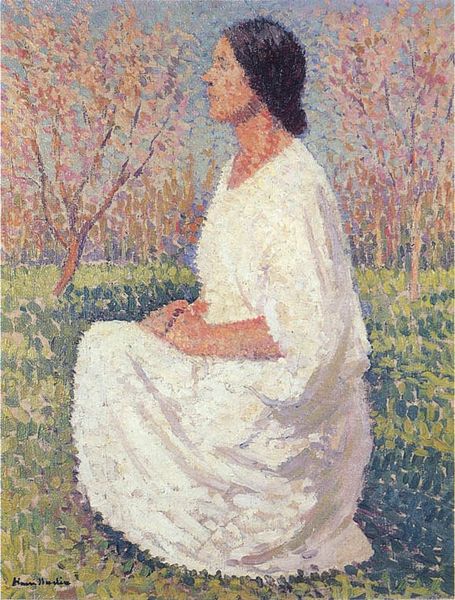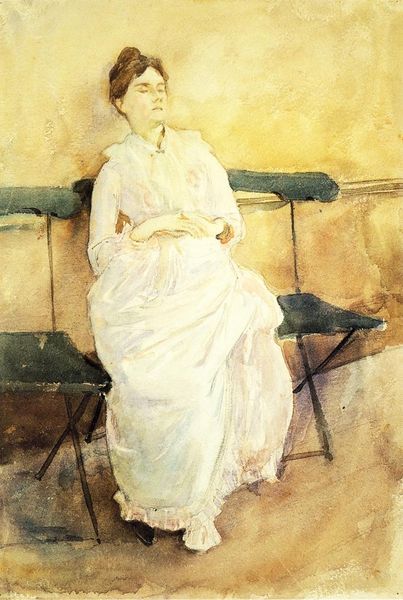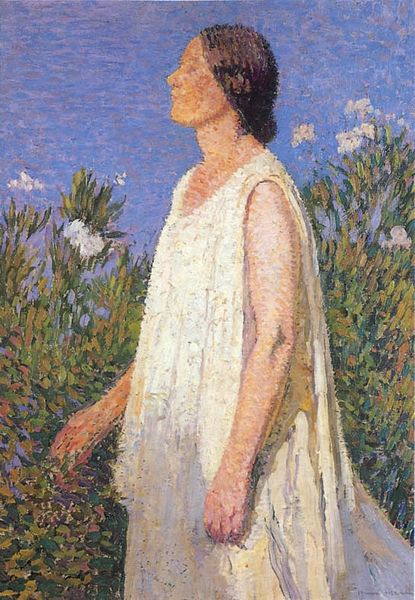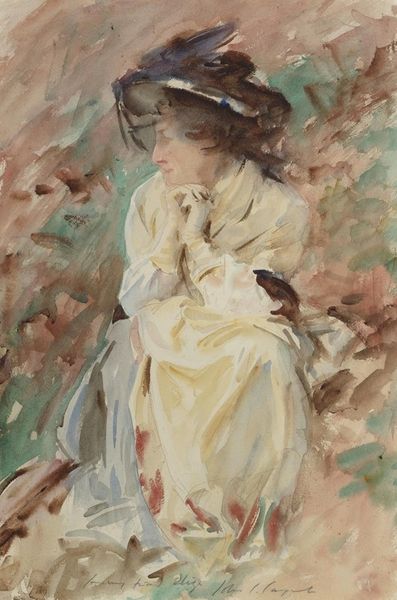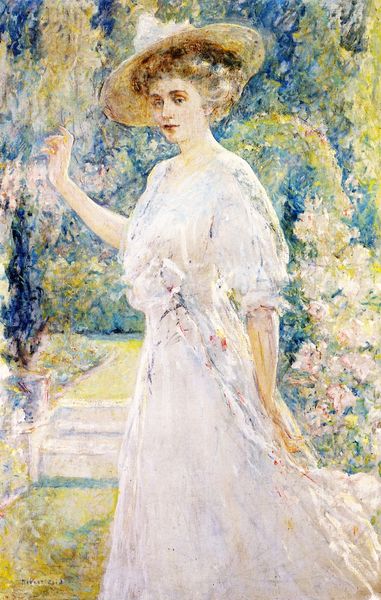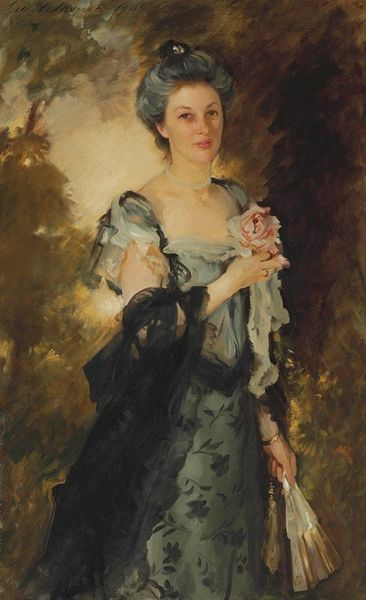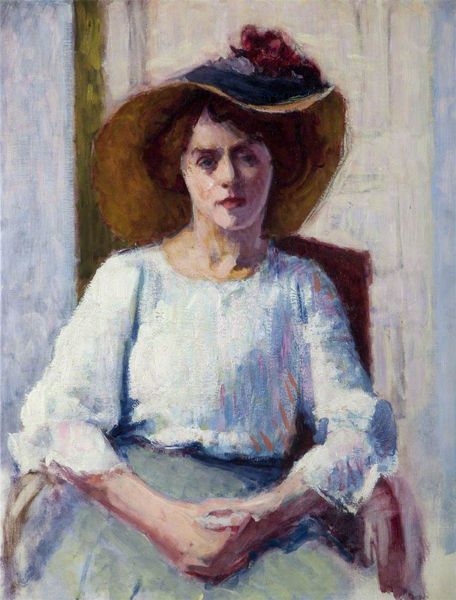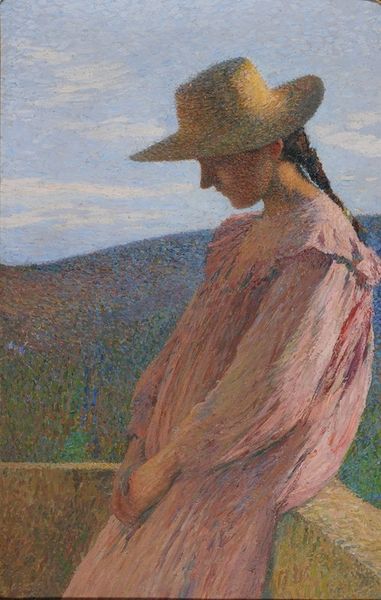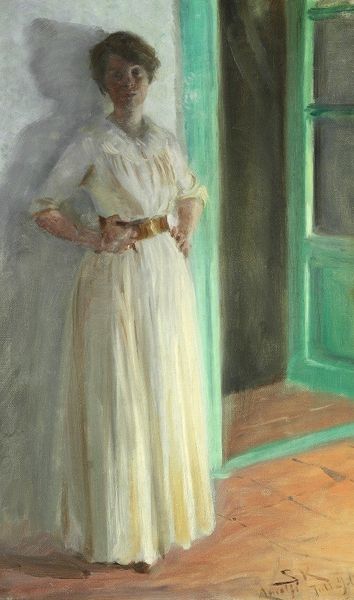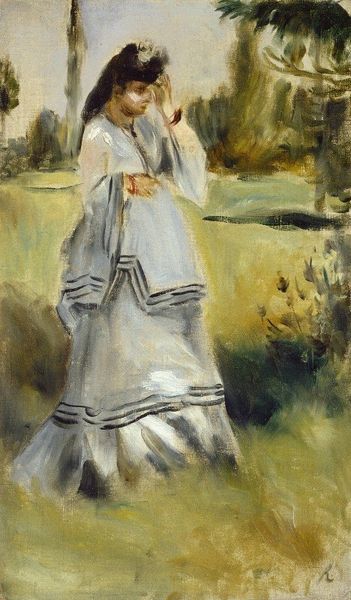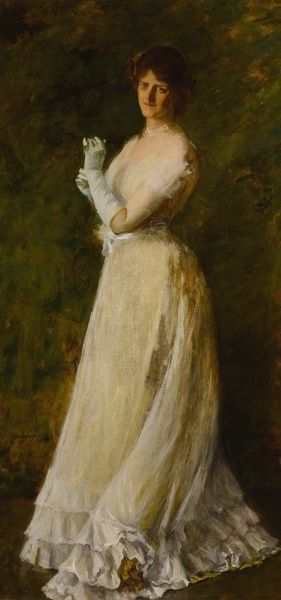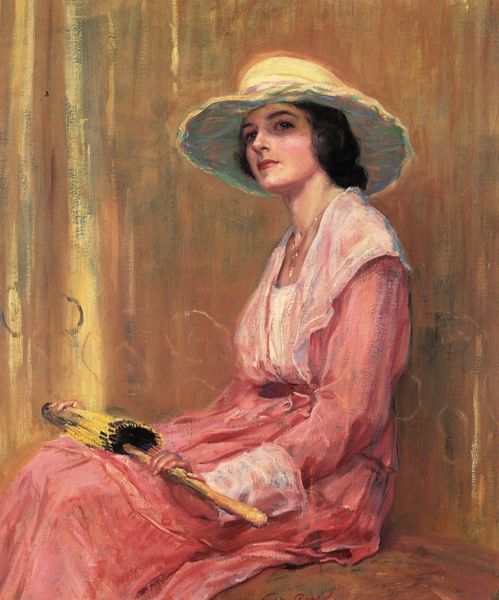
Dimensions: 47 x 28 cm
Copyright: Public domain
Editor: This is Camille Pissarro's "Portrait of Jeanne in a Pink Robe," painted in 1897. The brushstrokes feel so light, and there’s a real sense of movement. What do you see in this piece, beyond the immediate impression? Curator: I see a deliberate statement about the societal roles assigned to women in the late 19th century. Pissarro, often engaged with anarchist and socialist ideals, subtly challenges the objectification of women. This painting, while seemingly a simple portrait, places Jeanne, the model, in control of her own image. Note how her gaze is averted, almost introspective. Do you think that challenges typical portrait conventions? Editor: It definitely does. The pose isn’t overly posed or seductive, but the romantic elements such as the light pink tones, suggest that maybe Pissarro wants to avoid creating just another art object? Curator: Precisely! The pink robe isn't just a pretty garment; it represents a societal expectation of femininity that Jeanne, in her reserved posture, neither embraces nor rejects outright. She exists within the construct, yet maintains a sense of self. And think about Pissarro choosing to depict her en plein air: this might be seen as another comment on the restricted social possibilities for a young bourgeois women to occupy public space. Can we consider that the painting challenges the confines of gendered expectations in society, inviting viewers to question these very constructs? Editor: That's a really powerful interpretation, I hadn't considered the setting to be symbolic. I was too busy focusing on how the brushstrokes added so much character to the image. Curator: Absolutely, but isn't that the power of art? It operates on multiple levels, aesthetic and ideological. Considering the socio-political context, in which women were struggling for greater autonomy, adds layers of meaning to what might seem like a straightforward portrait. Editor: I’ve never really looked at Impressionism in this light, so I have learnt a lot by thinking about gender and political constructs of that era. Thanks!
Comments
No comments
Be the first to comment and join the conversation on the ultimate creative platform.

